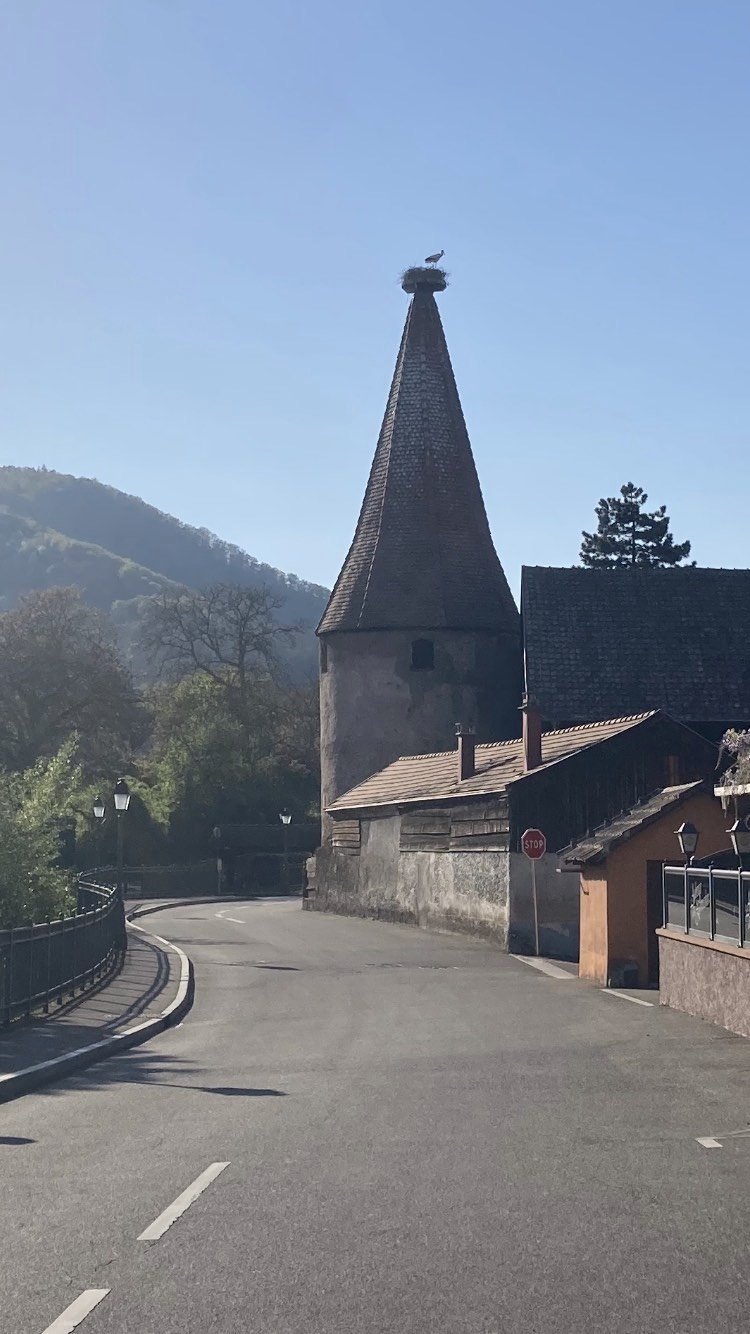
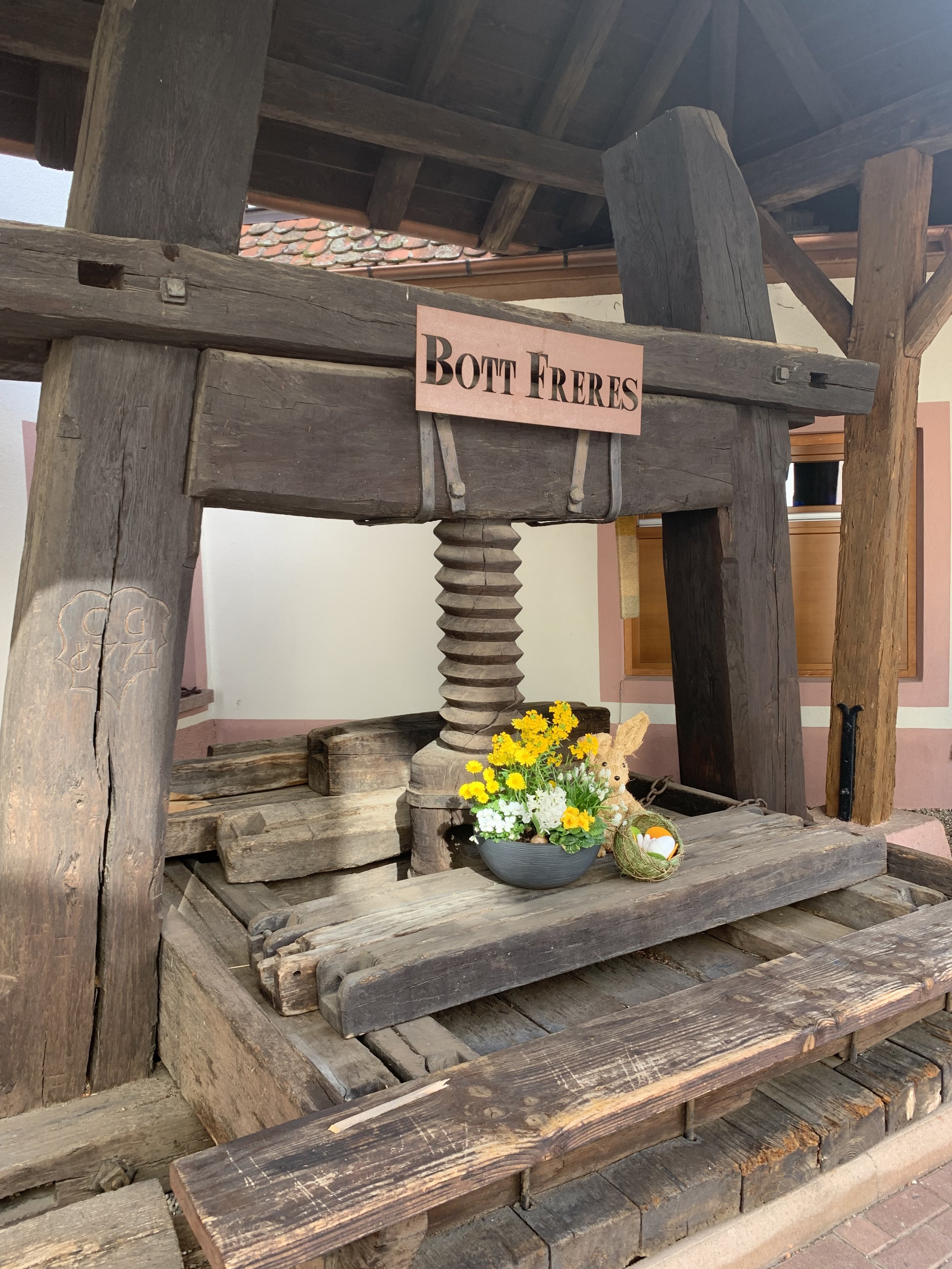
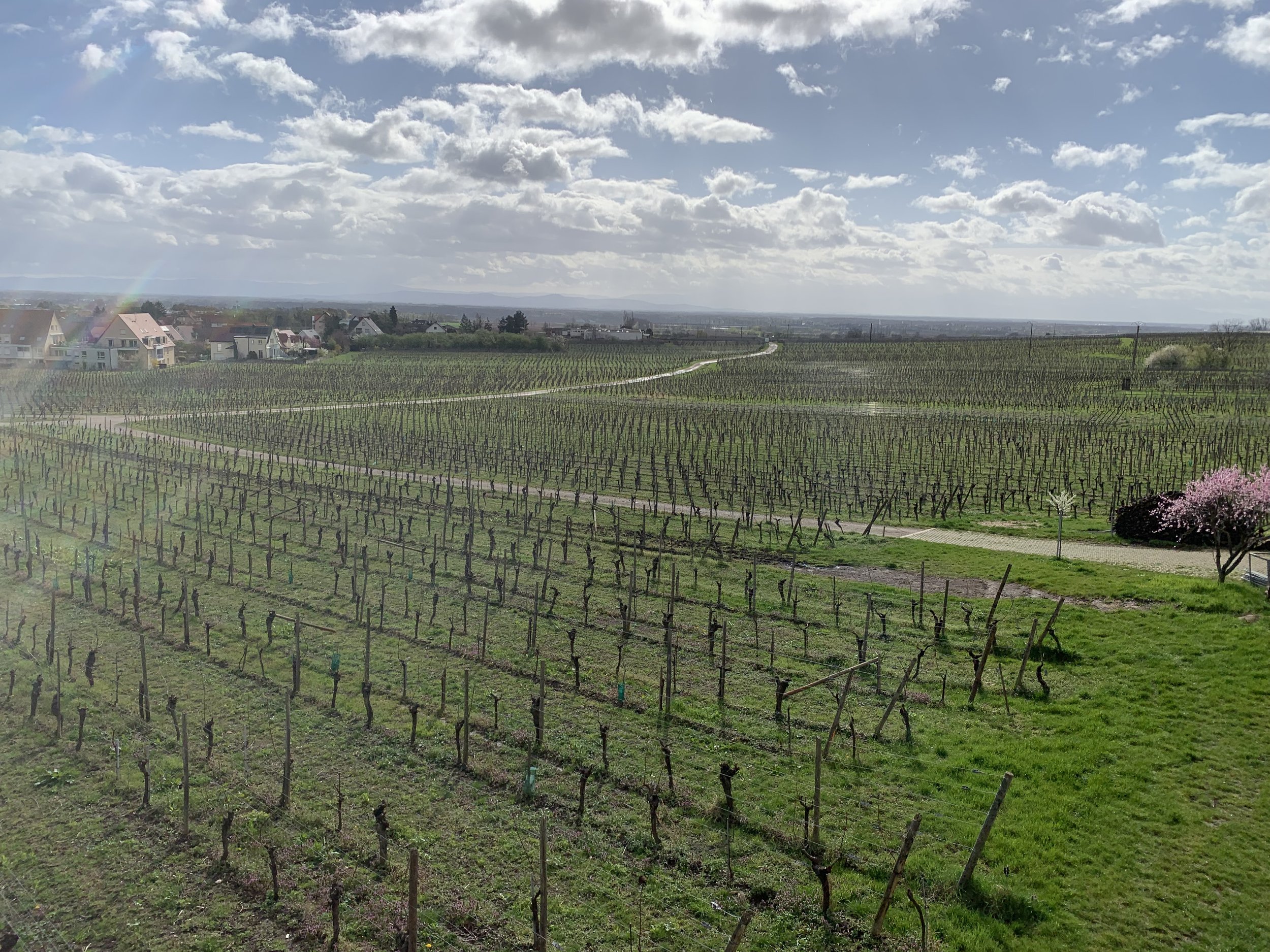
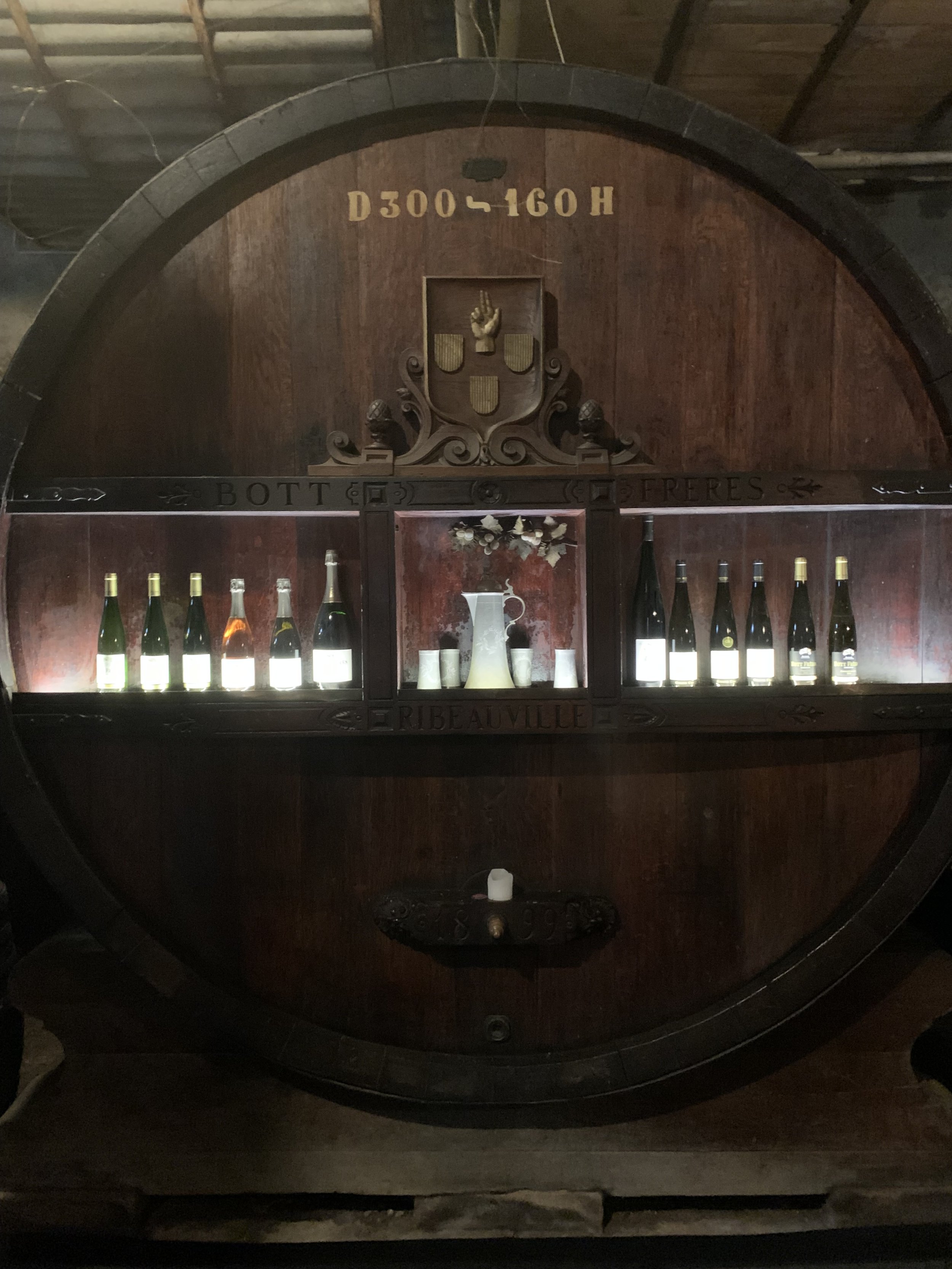
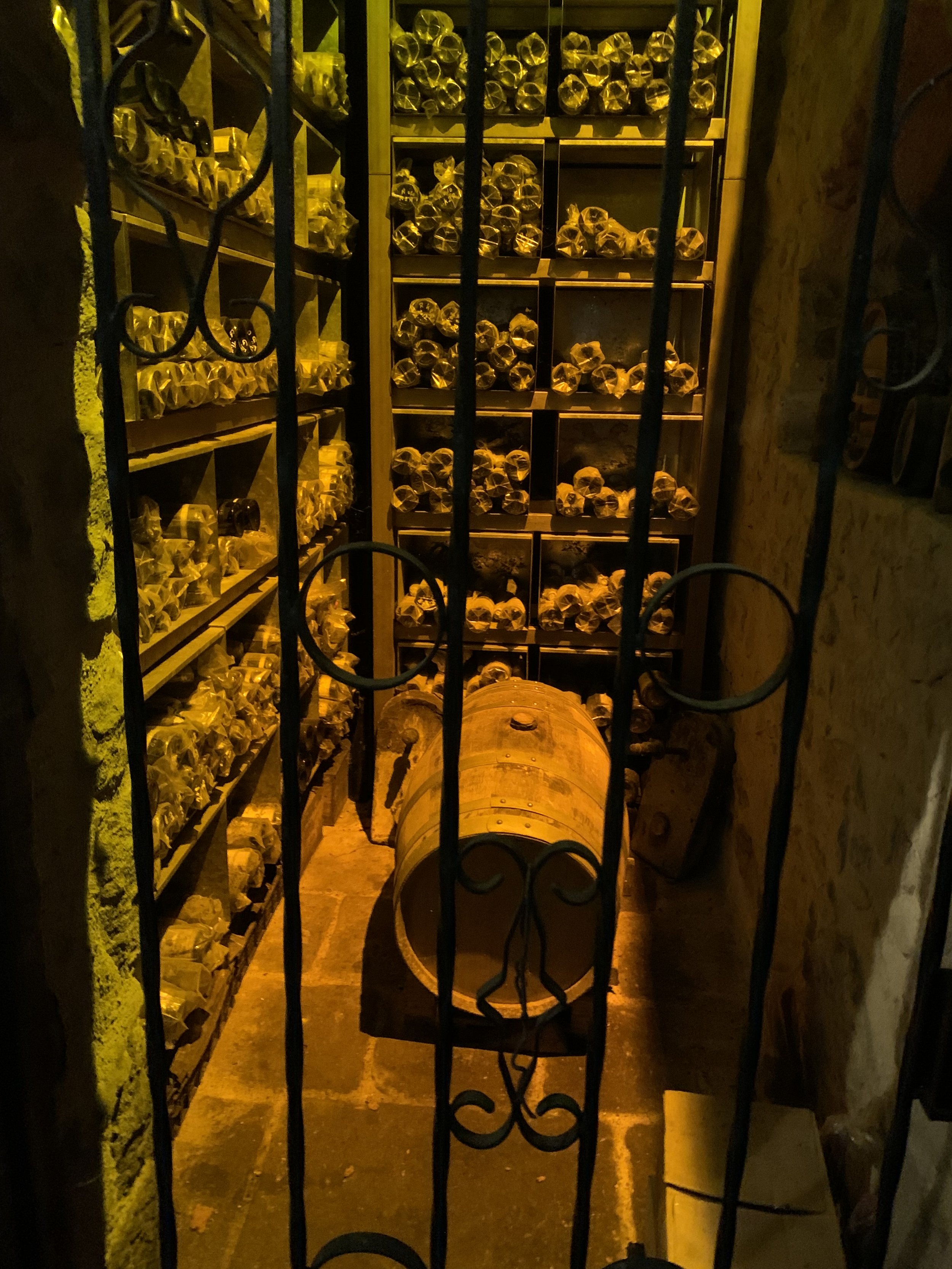
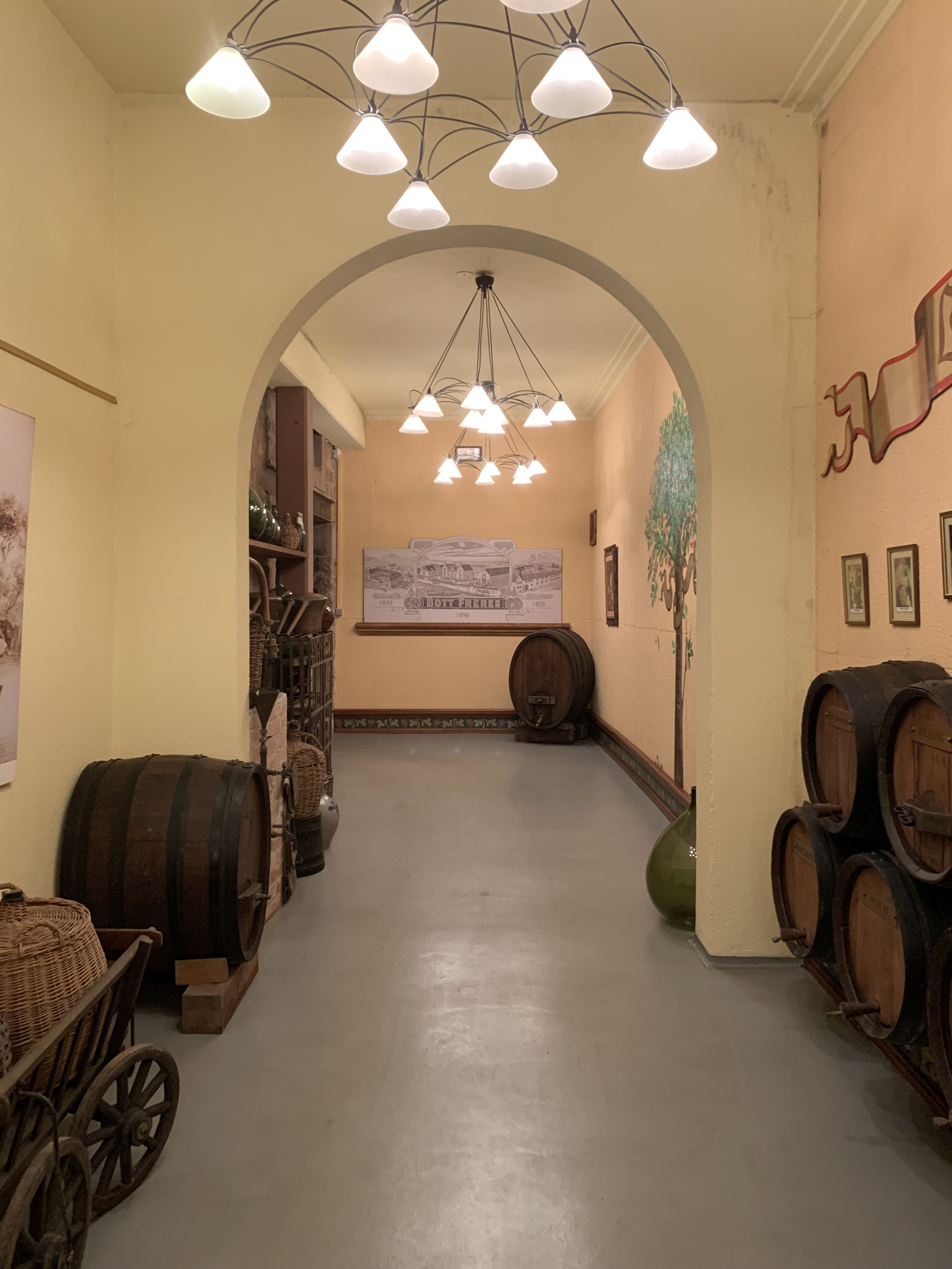
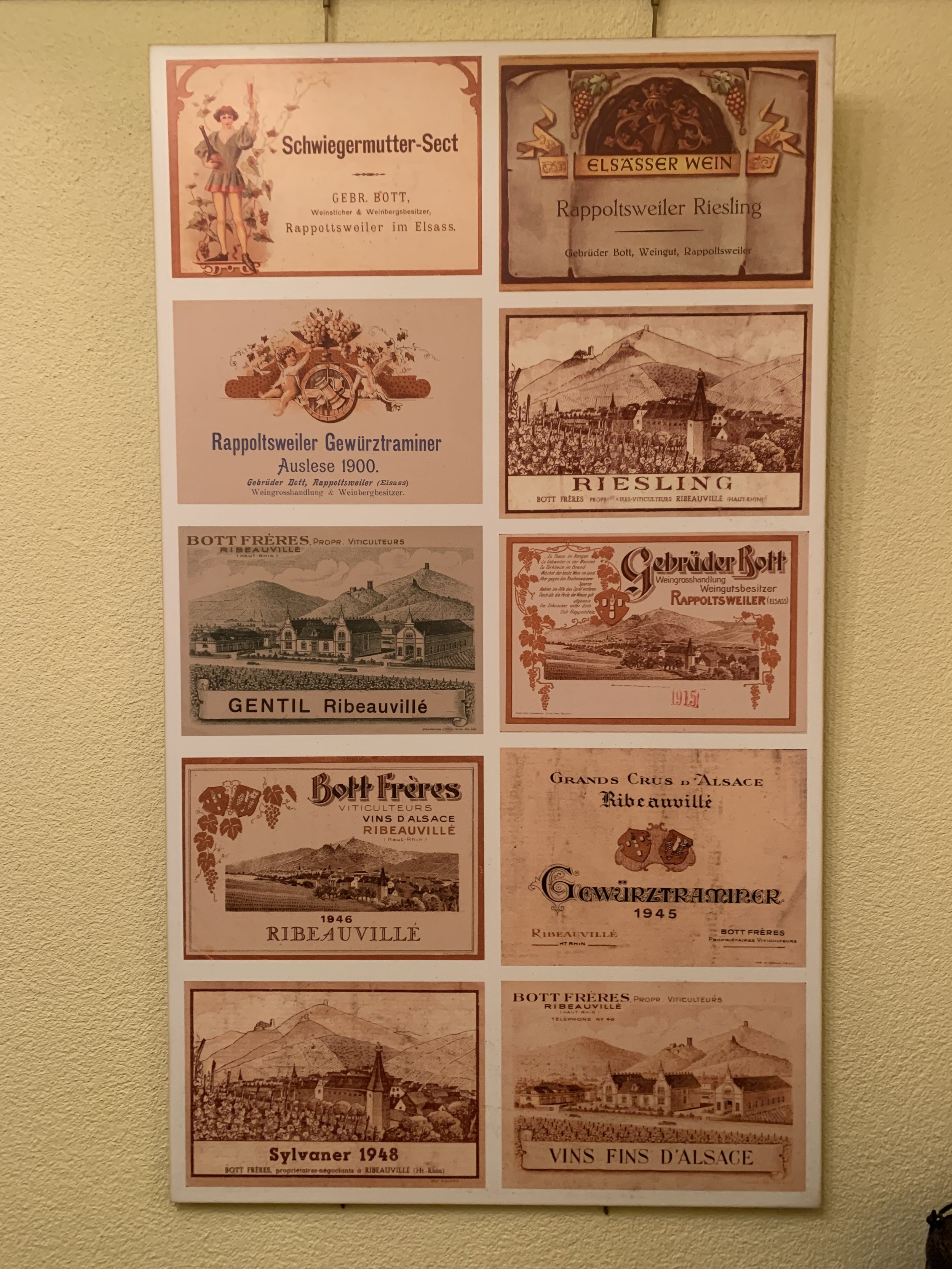
Bott frères
Who: Nicole Bott and Gladys Wintermantel
Where: Ribeauvillé (Alsace, France)
What grapes: Sylvaner, Pinot Blanc, Muscat, Riesling, Pinot Gris, Pinot Noir
Key facts: Established in 1835, Bott-Freres is a 7th generation family-owned and operated winery. Average vine age at the domaine is 35 years. On 17ha of land, the winery grows all seven traditional varieties for the region.
Website: https://bott-freres.fr/en/
Instagram: @bottfreres
Bott Frères Crémant d'Alsace AOC Q.V. Paul
Viticulture: Certified organic
Soil type:
Grapes: Auxerrois
Method of fermentation: Primary fermentation in temperature controlled stainless steel. Secondary fermentation in bottle. One year on the fine less before disgorgement. Non dose, less than 1g/l residual.
Paul Bott inherited a substantial amount of old vineyards. An average vine age of 35 years allows Bott to make bone dry bubbly that retains intense fruit aromas and enjoyable texture. Affordable sparkling wine still exists!
Bott Frères Crémant Rosé d'Alsace AOC Brut NV
Viticulture: Certified Organic
Soil type: Composed of sandy-clayey loams, silty-clayey-sandy limestones and orange-yellow beige limestone pebbles which rest on a deep slab made up of limestone and sandstone marl. Soils marked by iron.
Grapes: Pinot Noir
Method of fermentation: After a first fermentation in a thermoregulated stainless steel vat, the wine is bottled in February, so that the secondary fermentation in the bottle can take place. After a 12-month aging period, the bottles are turned at an angle so that the deposit settles in the neck of the bottle, and can be easily expelled during the disgorging stage. During disgorging, a small amount of dosage is added.
They make 40,000 bottles of Cremant each year! There are many cuvees. This one is 100% Pinot Noir. The fruit is only from the 2020 harvest. It’s a very pale color. Delicate, and fresh. Nicole noted that it’s windy in the Ribeauville valley, which helps with this wine’s fresh character. The fruit is from a 4-hectare field called Rotenberg (the site names remained German) a place with the clay soil that Pinot Noir prefers.
Bott Frères Edelzwicker Alsace AOC
Viticulture: Certified Organic
Soil type: clay limestone
Grapes: Sylvaner (45%) Pinot Blanc (45%) Gewurztraminer (10%)
Method of fermentation: Gentle pneumatic pressing. Fermentation in thermoregulated stainless steel vats.
I’ve been craving this white! Dry, floral, fresh, herby. It makes me feel like spring will arrive. We’ll eat asparagus and small waxy potatoes, sit outside, listen to birds and leafblowers, accidentally drink the whole bottle. Maybe some smoked trout will be present. A picnic white, with a screwcap, better than it has to be. Pinot Blanc, Sylvaner, and Gewurztraminer can all thrive in the fields surrounding Ribeauville because the area is on a faultline. Geology underpinning the area’s vines is quite diverse.
Bott Frères Riesling Tradition Alsace AOC
Viticulture: Certified Organic
Soil type: Clay-limestone
Grapes: Riesling
Method of fermentation: Gentle pneumatic pressing. Fermentation in thermoregulated stainless steel vats. Aged on fine lees for 8 months, in stainless steel vats. Bottled after a light filtration.
It smells of lavender. The fruit for this wine grows on vines near the road below their house. It’s charming. Very approachable. Citrus rind aromas. I was impressed.
Bott Frères Riesling Reserve Personnelle Alsace AOC
Viticulture: Certified Organic
Soil type: Clay-limestone
Grapes: Riesling
Method of fermentation: Pressing is done gently in pneumatic presses for 3 to 5 hours. Fermentation in thermoregulated stainless steel vats. Aging on fine lees for 7 months. Bottling after a light filtration.
These grapes are grown in three neighboring plots that are above the Osterberg Grand Cru. Old vines from high elevation sites. The wine is quite open. Pure mineral. Spring water. A delightful palate-feel Very, very tasty.
Bott Frères Riesling Vendanges Tardives Alsace AOC
Viticulture: Certified organic
Soil type:
Grapes: Riesling from low yield (30hl/ha) parcels. Fermented in temperature-controlled stainless steel. Aged on the fine lees for several months. Bottled in August, roughly 10 months post-harvest.
Method of fermentation: Gentle pressing for three hours.
Now more than ever, dessert feels like an afterthought in restaurants. Finish your meal with something more delicious. Pass on the passable profiterole choux a la creme, drink this glorious, unctuous, wildly layered dessert wine instead. It is excellent. Grapes for this wine were air dried on the vine (passerillage) to increase sugar concentration at (late) harvest.
Bott Frères Riesling Geisberg Grand Cru
Viticulture: Certified Organic
Soil type: Marl-limestone
Elevation: 250-320m
Grapes: Riesling
Method of fermentation: Pressing is done gently in pneumatic presses for 3 to 5 hours. Fermentation in thermoregulated stainless steel vats. Aging on fine lees for 7 months. Bottling after light filtration.
This is a site of stone terraces, a place where it’s warm all day. South-facing. The wine has a remarkable plum/fig aroma. It’s persistent, to say the least. The Bott family have been making wine from Geisberg since 2016.
Bott Frères Riesling Kirchberg de Ribeauvillé Grand Cru
Viticulture: Certified Organic
Soil type: clayey and generally very stony
Elevation: 270 to 350m
Grapes: Riesling
Method of fermentation: Pressing is done gently in pneumatic presses for 3 to 5 hours. Fermentation in thermoregulated stainless steel vats. Aging on fine lees for 7 months. Bottling after a light filtration.
This wine is pretty fabulous. The fruit is so well defined. Kirchberg was the first plot of vines that Paul Bott purchased. Flint, smoke, and silex.
Bott Frères Muscat Tradition
Viticulture: Certified Organic
Soil type: Silty-clay-sandy limestones
Elevation:
Grapes: Muscat
Method of fermentation: Gentle pneumatic pressing. Fermentation in thermoregulated stainless steel vats. Aging on fine lees for 3 months, in stainless steel vats. Spring bottling, after light filtration to stabilize our wines.
Hand harvested. Very pretty aromas, floral like the best wines from Canelli. The wine is a blend of Muscat d’Alexandra, and Muscat Ottonel. They bottle it with a screwcap, always in time for asparagus season.
Bott Frères Pinot Blanc Tradition Alsace AOC
Viticulture: Certified organic
Soil type:
Elevation:
Grapes: Pinot Blanc
Method of fermentation: Pressed gently in a pneumatic press for three to five hours. Temperature controlled fermentation in stainless steel. Aged on the lees for three months. Light filtration. Outside on their farm, Paul and Gladys plant shrubs and honey plants, and build nesting boxes, to add biodiversity to this bucolic slice of Alsace.
Bott Frères Sylvaner Tradition
Viticulture: Certified Organic
Soil type: Silty-clay-sandy limestones.
Elevation:
Grapes: Sylvaner
Method of fermentation: Pressing is done gently in pneumatic presses for 3 to 5 hours. Fermentation in thermoregulated stainless steel vats. Aging on fine lees for 4 months. Bottling after a light filtration.
Hand harvested from vineyards that have been in organic conversion since 2019. Clean, accessible, and bottled with a screwcap. Now I want fruits de mer. I think this can be a glass-pour hit, far and wide.
It looks like a wedding cake, or an elaborate municipal building. The architecture is fancy. Established in 1835, Bott-Freres is a 7th generation family-owned and operated winery in Ribeauvillé, in the heart of vinous Alsace. The two brothers who founded the winery migrated to Alsace from Switzerland. They were originally beer makers. In 1889, the winery moved from the” city center” to its current location. Ribeauville in 2023 has 5,000 residents. It was hardly an epic relocation.
I drove there from Colmar, across the vine-covered plain, and up a gentle slope to the center of this affluent, wine-filled village. It was raining. Bott-Freres is perhaps a kilometer from the center of town. I hustled across the two-lane residential street, and was soaked in seconds, well before reaching the winery’s door.
Inside the spacious tasting room and wine shop that occupy a significant portion of the first floor, I met Nicole Bott and Gladys Wintermantel, two generations of the family that run this historic property. Sixty percent of the winery’s total production is sold through their own storefront: impressive! Nicole has been working at Bott-Freres since the 1980’s. An effusive advocate for the wine and tourist attractions of Alsace, Nicole is married to Laurent, sixth generation of the Bott family, and the property’s in-house gourmand. Nicole and Laurent’s son Paul started working at the winery in 2008. In “retirement,” Laurent keeps himself busy delivering wine to 100 restaurants scattered across the Bas-Rhin. Not a bad way to get out and about. It beats pickleball.
Nicole and Gladys shared, in wide-ranging discourse and abundant bottles, a comprehensive view of who Bott-Freres are today. On 17ha of land, the winery grows all seven traditional varieties for the region. The farm has been certified organic since 2022 (two hectares of their vines are still in conversion.) All the farmers in Ribeauville are banded together to increase healthy farming. A community-wide biodiversity initiative! What a smart development.
Since 1962, there have been rules in place to limit permissible yields in Alsace AOC wines. Gladys is part of the Alsace wine committee, a group that develops and protects these quality-driven directives. Today, maximum yield is set at 60hl/ha in the area. Bott-Freres aim for 50hl/ha in their wines. Lower permissible yields are central to rehabilitating Alsace’s reputation in France. For a while things got out of hand.
Average vine age at the domaine is 35 years. Along with two helpers, Paul farms 45 distinct parcels of land. I didn’t meet him. Understandable. Sounds like he’s perpetually busy.
The tasting room was decorated for Easter. Felt bunnies, pastel eggs. Adorable. We passed through the public space and into a working part of the winery, filled with the normal array of bottling and fermentation equipment. Label machines. With the modern equipment we surveyed, Gladys noted they can now label 2,000 bottles per hour. They have a press on this level of the building that can be positioned above fermentation vats in the cellar below. Highly efficient.
The sun emerged. We popped outside, to survey fields stretching east from their wide balcony, parcels flattening as they march toward the Rhine. We were facing the Black Forest, one hour away by car. On a clear day you can see it. One million years ago, between these Vosges slopes and the forest on the horizon, the land collapsed, and became a shallow sea. Fossilized seashells are often found here, buried in the clay/limestone soil.
In spite of personal experience to the contrary, Alsace is the second driest region of France. The Vosges mountains block threatening storm fronts. Gladys and I left the veranda, chased by wind and black clouds. We descended into the winery’s labyrinth of subterranean spaces. In dim light, enormous füders filled a room. A 16,000 liter barrel dominates the space, holding court like a retired monarch. It was built in 1899 for the World’s Fair. The “new cellar” built 50 years ago is filled with cement and stainless steel. The winery’s storage and aging needs have changed from generations past. Many ancient casks have become decoration. However, the Bott family still vinify wines in 7,000 liter oak casks.
Antique bottles wrapped in cellophane filled a locked wine closet. We wound through passageways, past a museum's-worth of retired farming equipment. Family elders were quite attached to these historical artifacts. They are presented with reverence, and plenty of context. It’s fascinating to see bottle labels amended across eras of Alsace’s history. From 1871-1918 everything was legally required to be in German. So, across the span of almost two centuries, their bottles switch from French to German, and back again.

